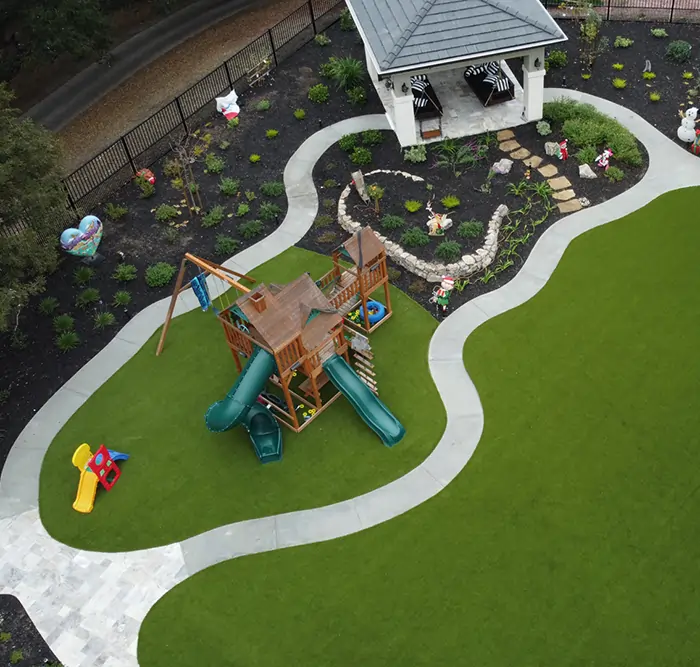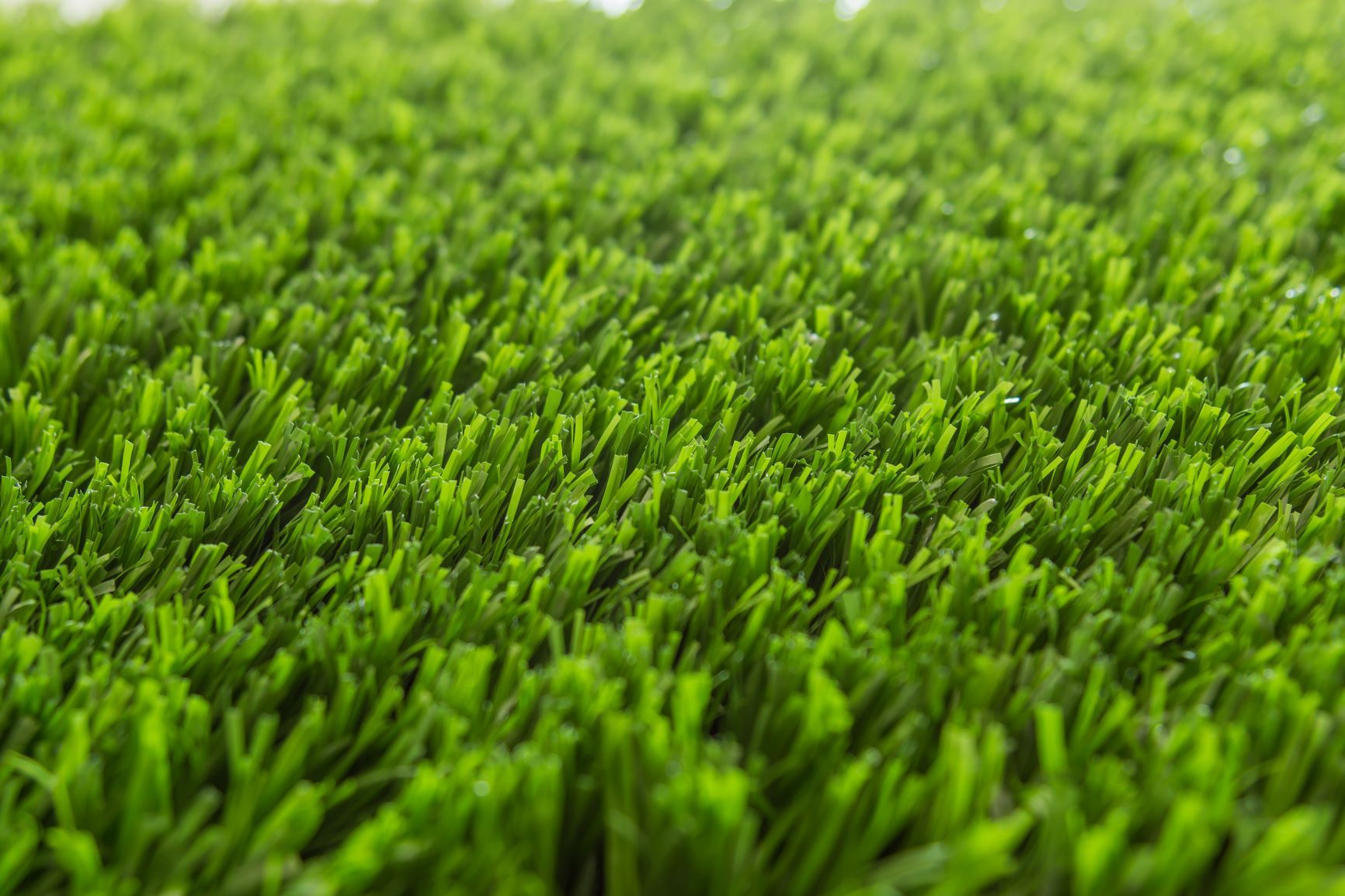How Does Synthetic Grass Installation Transform Your Landscape?
The setup of synthetic grass provides a multifaceted opportunity for landscape improvement, supplying a mix of visual improvement and useful benefits. Beyond the prompt aesthetic appeal of a continually green area, man-made lawn dramatically minimizes upkeep demands and water consumption.
Advantages of Synthetic Grass
When thinking about landscape design solutions, the advantages of fabricated lawn become significantly obvious. Among one of the most considerable advantages is its low upkeep requirements. Unlike natural lawn, which demands regular mowing, watering, and fertilizing, synthetic turf keeps its lush appearance without these labor-intensive tasks. This allows homeowner to designate their time and resources to other searches.
In addition, synthetic grass gives a regular playing surface, making it perfect for leisure areas and sports areas. Arizona artificial grass. Its sturdiness guarantees that it can stand up to heavy foot web traffic without the damage related to all-natural grass, therefore promoting year-round usability
Environmental benefits additionally play a vital function in the charm of man-made turf. By removing the requirement for chemicals and herbicides, it adds to a healthier community. The decrease in water use is considerable, especially in locations vulnerable to dry spell.
Moreover, synthetic grass boosts aesthetic appeal, giving a dynamic green landscape that continues to be uniform throughout the seasons. This uniformity can boost property value and curb appeal, making it an appealing choice for homeowners and businesses alike. In summary, the numerous benefits of synthetic grass make it a compelling selection for modern-day landscaping remedies.
Cost Cost Savings Gradually

Firstly, fabricated lawn gets rid of the need for persisting expenses associated with water, fertilizers, pesticides, and grass maintenance services (Mesa artificial turf). Homeowners can anticipate to save substantially on their water costs, especially in regions vulnerable to drought, where irrigation of all-natural grass can end up being much too pricey. Additionally, the minimized demand for chemical treatments not only lowers costs yet likewise lessens labor expenses associated with grass treatment
Furthermore, fabricated grass is designed for toughness, lasting between 15 to 25 years with appropriate upkeep. This long life means less fixings and substitutes, leading to additional financial savings. Gradually, the advancing economic benefits of synthetic grass can substantially exceed the first expenses, making it a sensible financial investment for those wanting to enhance their landscapes while also handling their budgets efficiently. In recap, the long-lasting price savings related to artificial grass make it an attractive option for property owners looking for both visual appeals and economic vigilance.
Ecological Influence
The ecological effect of synthetic grass is a topic of substantial passion and debate. Proponents argue that artificial turf saves water, as it removes the demand for watering, which is especially beneficial in deserts. This water preservation can lead to reduced stress on local water sources and reduced energy bills for property owners. Additionally, artificial grass eliminates the requirement for chemical fertilizers and chemicals, which can present risks to regional ecosystems.
Nevertheless, problems about the environmental impact of synthetic grass persist. The manufacturing of artificial materials often calls for substantial energy and oil sources, adding to carbon discharges. When fabricated lawn reaches the end of its life cycle, disposal can come to be troublesome, as many items are not biodegradable and can end up in land fills (Turf companies mesa az).
Another area of issue is the possibility for microplastics to leach right into the dirt and rivers, which could negatively affect aquatic life and ecological communities. While synthetic lawn presents specific ecological benefits, it also poses difficulties that warrant cautious consideration. Stabilizing the advantages of water conservation with the eco-friendly influences of manufacturing and disposal is vital for making notified landscape design choices.
Design Versatility
Synthetic grass opens a globe of style flexibility, allowing home owners and landscape architects to develop visually pleasing and functional outside rooms. Unlike traditional yard, man-made grass can be tailored to fit different motifs, styles, and purposes, improving the overall landscape layout.
One of the main benefits of fabricated turf is its versatility. Property owners can select from a variety of textures, colors, and stack heights, making certain that the grass enhances existing features and architectural aspects.

Upkeep and Long Life
With marginal maintenance called for, synthetic grass offers a functional solution for home owners looking for a low-maintenance landscape design option. Unlike natural yard, which demands normal mowing, watering, and fertilizing, artificial turf dramatically decreases the time and effort needed to preserve an attractive yard.
The long life of man-made turf is another engaging benefit. Premium artificial turf is crafted to stand up to various weather, guaranteeing sturdiness gradually. Usually, man-made lawn can last between 15 to 25 years, depending upon the quality of materials used and the degree of foot web traffic it sustains. This longevity converts right into long-lasting expense financial savings, as homeowners are much less regularly required to replace here or fix their landscape.
Furthermore, maintenance jobs for artificial grass are uncomplicated. Periodic brushing to maintain the blades upright, rinsing to remove particles, and routine infill replenishment are generally adequate to maintain its look and capability. This convenience of maintenance allows house owners to appreciate their exterior rooms without the worry of comprehensive labor.
Verdict
In conclusion, artificial lawn installation significantly enhances landscapes by giving a lively, low-maintenance alternative to natural grass. The benefits consist of considerable expense savings, a positive environmental impact via decreased water usage and chemical therapies, and amazing layout convenience that accommodates numerous outdoor aesthetics. In addition, the resilience of synthetic grass makes sure longevity even under hefty foot website traffic. Overall, artificial lawn emerges as a sensible and sustainable service for transforming exterior areas into functional and visually appealing environments.

In verdict, artificial lawn installment substantially boosts landscapes by offering a lively, low-maintenance choice to natural turf.